Text
Deathly Pale
The desire of women for ultra-pale skin didn't end with the Elizabethan era. In Victorian times, women still coveted the look of translucent white skin and applied the same causic, poisonous substances to their face, neck, arms and hands. Turbuculosis was a common cause of death in the era. The look of death was considered romantic for its tragic and poetic beauty. Even if a Victorian woman wasn't charmed by death due to turbuculosis, she still coveted pale, translucent skin. Tanned faces were the result of long hours of work out-of- doors, belonging to the lower classes.
“The death of a beautiful woman is, unquestionably, the most poetical topic in the world.” - Edgar Allan Poe
The two predominant beauty standards were the painted beauty and the natural beauty. The later was the preferred ideal of the average fashionable woman. The methods she employed to achieve good skin and complexion were all in an effort to look natural. The overly painted look was seen as racy - the province of prostitutes and "loose" women.

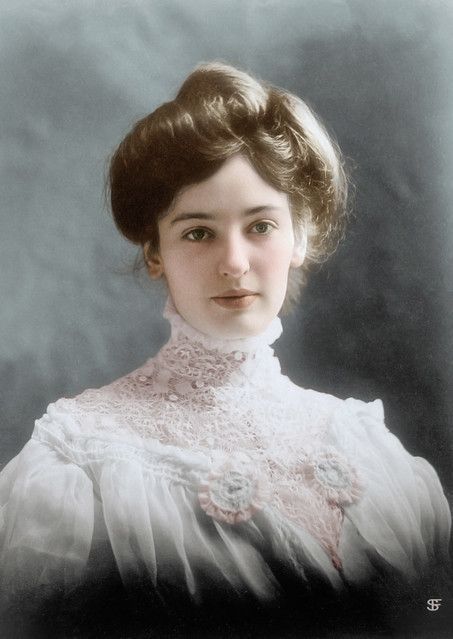
Upon a well-off Victorian woman's dressing table were arsenic, ammonia, and opium, among other toxic substances. The Ugly-girl Papers, Or, Hints for the Toilet was a book published in 1874 that contained a series of beauty articles for Harper's Bazaar. The author recommends coating the face with opium before bed and a brisk wash with ammonia in the morning. How refreshing.
Lotions containing lead were popular for whitening the skin as well as erasing freckles and other blemishes. Complexion wafers containing arsenic were widely advertised. These products were peddled to women as being harmless when, in fact, they caused headaches, nausea, and even paralysis.

To achieve eyes with a seductive gaze, Victorian women used Belladonna or Deadly Nightshade in the form of eye drops, which diluted the pupils. Eye irritation and even blindness were reported symptoms of this practice.
A little color over that deathly white facial palor was usually achieved with beet juice and sometimes, animal blood. It's intriguing to wonder how women came into possession of animal blood, though the answer may be as simple as a purchase from a local vendor. Vermillion, also known as red mercury, was used to tint the lips and was known to be poisonous.
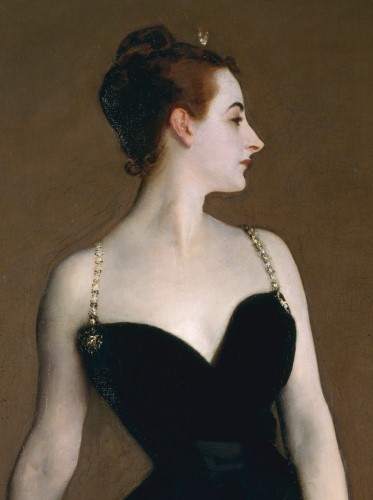
Virginie Gautreau, the subject of the famous John Singer Sargent painting known as Madama X, was not only known to use products to whiten her skin, but was also purported to use indigo dye to paint veins over the ultra-pale veneer of her skin. I haven't found any sound evidence of this, however. What I did read in both The Collector and in an article at minsooki, was that over her arsenic pale skin, Virginie used a lavender powder to counteract the warmth of candlelight.
What's most troubling is that in the face of ample evidence of the health consequences of many of these products, women continued to value the look they provided, over their own health and safety.
References:
• Molly Brown House Museum: Beauty is in the Eye of the Beholder: How Victorians Used Common Poisons to Become Drop Dead Gorgeous
• Awful Forever
• Atlas Obscura
• minsooki.com
• The Collector
#victorian era#history of makeup#victorian beauty standards#poisonous beauty products#madame x portrait#victorian high society
4 notes
·
View notes
Text
Callot Soeurs (Callot sisters) was a leading Paris fashion design house from 1895 through the 1920s. The fashion house was operated by the sisters Regina, Marie, Marthe and Joséphine Callot.
They were taught by their mother, a lacemaker. The eldest sister, Marie was a trained dressmaker. The sisters started out embellishing lingerie and blouses with antique ribbon and lace. The enterprise quickly took a turn for success as the sisters began creating their own dress designs.


Right: the Callot Seeurs label
Left: The sales room of the haute couture house Callot Soeurs, c. 1910.
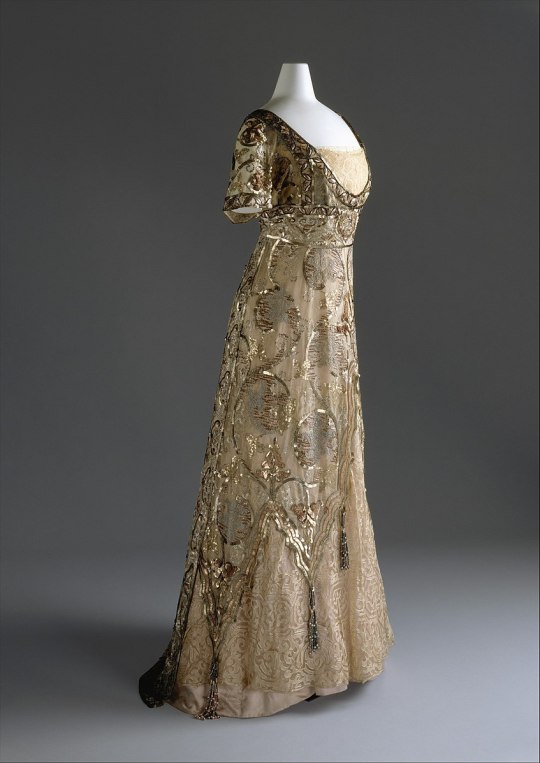
Evening dress from 1900-14, designed by Callot Soeurs • Silk, cotton, metal


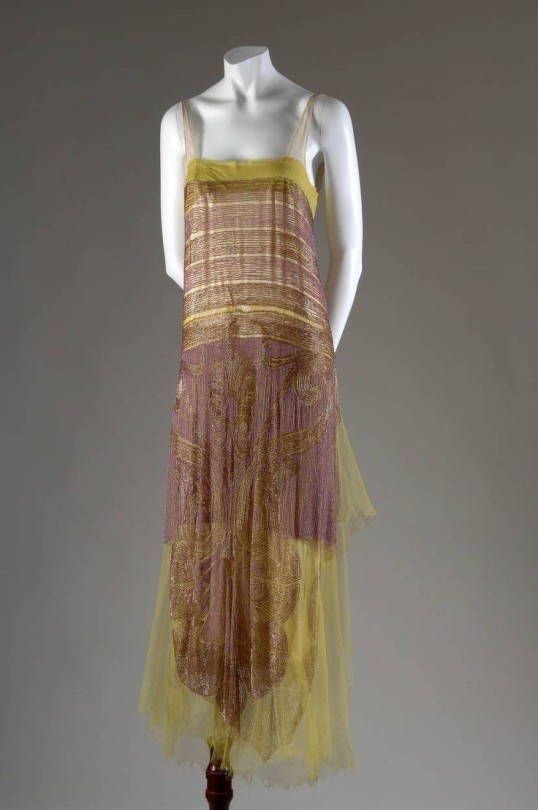
Callot Soeurs dress • 1910s

Day dress with collarless tunic • c. 1924
#haute couture#1920s fashion#callot soeurs fashion house#french fashion house#callot sisters#fashion history#1910s fashion#women's fashion history#20's evening dresses#callot soeurs accessories#the resplendent outfit blog#1920s day dress#early 1900s evening dress#fashion/art blog
4 notes
·
View notes
Text
Playing Dress Match-up: a painted dress and the actual dress or a close match.

Francisco Masriera (Spanish, 1842-1902) • Francisca Aparicio y Mérida, Marchioness consort of Vistabella • 1892 • Prado Museum, Madrid

Court dress • 1900 • Fitted bodice, bateau neckline, frilled cap sleeves, waist band, shallow vee waistline, over-skirt, train, full under-skirt
A different neckline than the painted dress but otherwise quite similar features of the under and over-skirts; similar, though not identical sleeves; the train is decorated like the under-skirt, unlike the solid train on the painted dress. Both lovely.
#art#portrait#painting#society portrait#art history#fashion history#victorian era fashion#painting to dress match#historical dresses
8 notes
·
View notes
Text

Mario Reviglione (Italian, 1883-1965) • Portrait in black of Mrs. Levi Muzzani • 1916
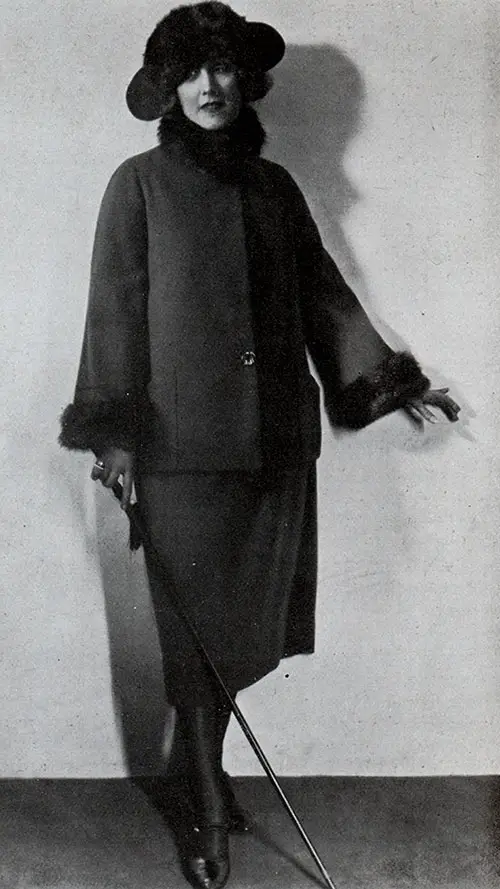
Fur was everywhere in the 20s. Both men and women were resplendent in fur. Fur-trimmed collars and cuffs adorned coats and jackets. Full-length all-fur coats of mink or sable were only affordable to the upper classes. People of lesser means made do with squirel or beaver.

Lord & Taylor silk coat, lined with fox fur • 1920s
Wrap coats such as the one above were very popular, both for day and evening. It's not clear if the one above was meant to be worn as an evening coat but I suspect it was.
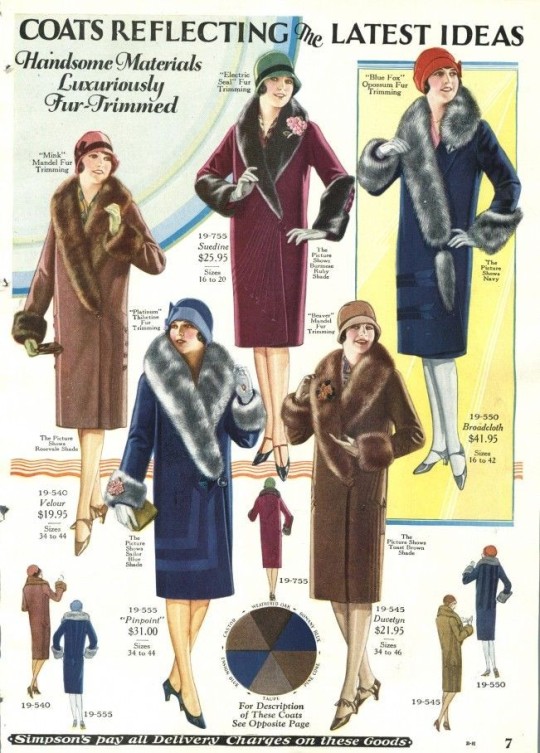
These fashion plate examples are more accurate examples of fir-trimmed coats worn in daytime.
Fur was popular in previous eras of fashion history as well. And, of course, remained popular for many decades to come. Thankfully, this trend was called to attention in the 1980s for its unnecessary cruelty.
#art#fashion history#art history#painting#portrait#fine art#1920s fashion#the resplendent outfit blog#fur fashion#1920s coats#women's fashion history#roaring 20s#fashion plate#mario reviglione#italian artist#oil painting#1920s photos
54 notes
·
View notes
Text
They didn't make it onto the fashion plates; they were the fashion plates
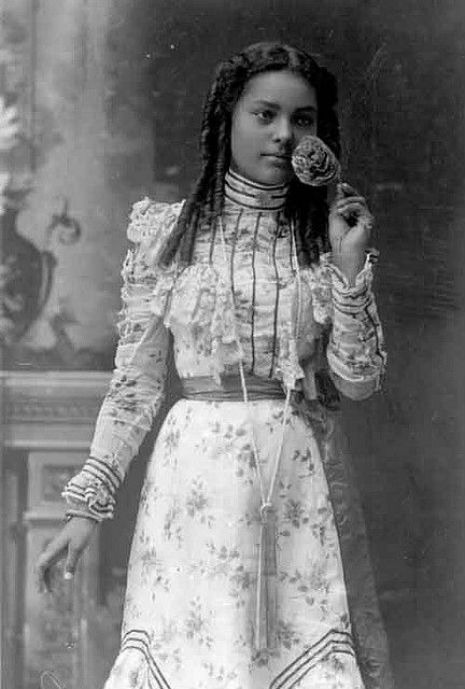
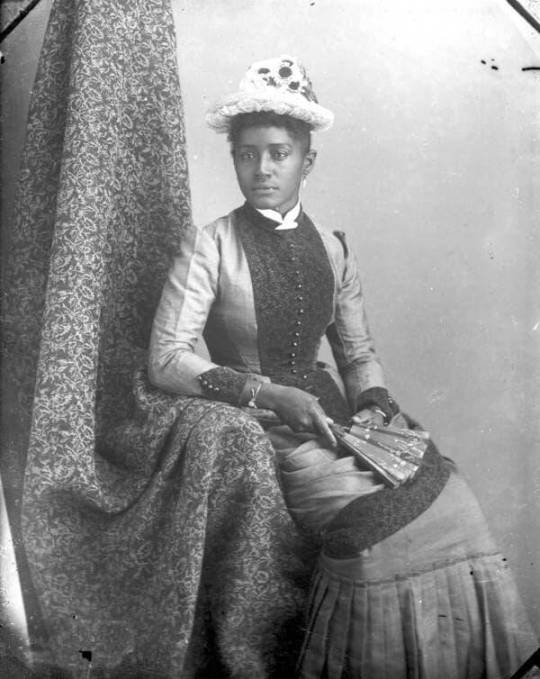

Lovely Victorian women of color dressed in elegant style.


#victorian fashion#old photos#1800s photography#black victorian women#photo portraits#fashion history#fashion history blog#the resplendent outfit art & fashion blog
584 notes
·
View notes
Text
Back to the Victorian Era
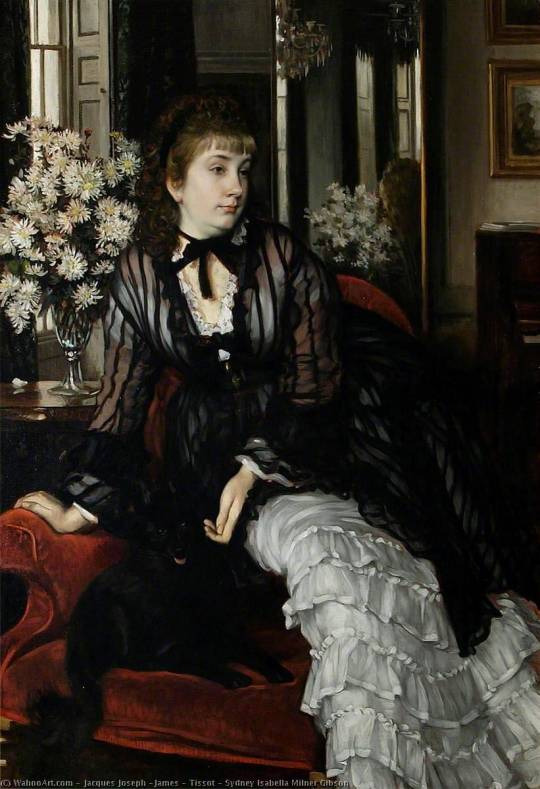
James Tissot (French/British) • Portrait of Sydney Milner-Gibson • 1872
Because Tissot was such a great painter of fashionable Victorian women, let's take a jaunt back to the 1870s!
Obviously a woman of leisure, Sydney Milner-Gibson reclines on the arm of her chair, allowing room for her dog. Comfortable in a basic day dress, her black over-bodice adds an elegant touch to this casual portrait.

Net/lace Canezou over-bodice • 1860s
#art#painting#oil painting#art history#james tissot#fashion history#women's fashion history#portrait#victorian fashion#painting to dress match-up#the resplendent outfit blog#fashion timeline#fashion time-machine#oil paintings
15 notes
·
View notes
Text

A still shot of a scene from the televised series, The Gilded Age. The character of Ada (played by Cynthia Nixon) is wearing a dress that looks a lot like the House of Worth gown below. The bodice and sleeves are a bit different, as is the pattern of the center panel of the dress.

House of Worth • Evening ensemble • c. 1888 • Designer Charles Frederick Worth • French, born England
#fashion history#historic dress recreation#historic dresses#house of worth#1800s ball gown#costume drama dresses#french designer#historical clothing#victorian gown#victorian fashion#women's fashion history#the resplendent outfit blog#the gilded age
43 notes
·
View notes
Text
Playing Dress Match-up: a painted dress and the actual dress or a close match.


The Painting: Édouard Manet (French, ) • Jeanne (Spring) • 1881 • The J. Paul Getty Museum, Los Angeles
The Dress: 1880s cotton print bustle dress
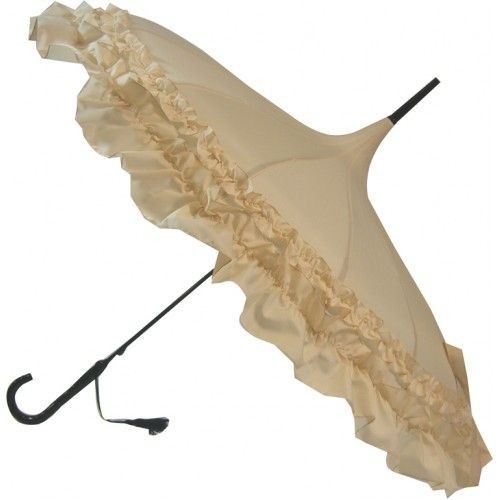

#art#painting#portrait#art history#fine art#édouard manet#impressionism#french artist#fashion history#19th century european art#oil painting#female portrait#the resplendent outfit blog#art & fashion
23 notes
·
View notes
Text
The Romantic Fashion Era

Jan Adam Kruseman (Dutch, 1804-1862) • Portrait of Alida Christina Assink • 1833 • Rijksmuseum, Amsterdam
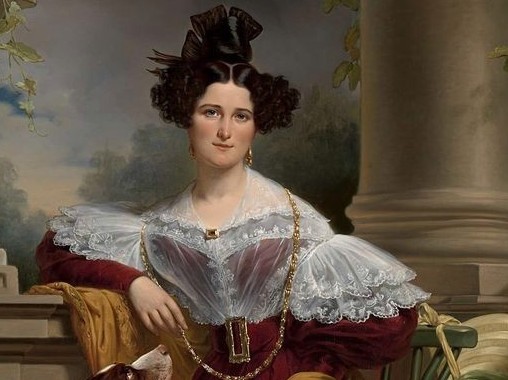
The sitter for this portrait is dressed in classic Romantic style. The leg-o-mutton sleeves and pelerine (lace covering over the shoulders) create the width at at the top of the outfit that characterized the silhouette of a women's outfit.
From 1830 to about 1835, fashion was all about extravagant proportions in the shoulders and a tiny waist accentuated further with a belt or sash.
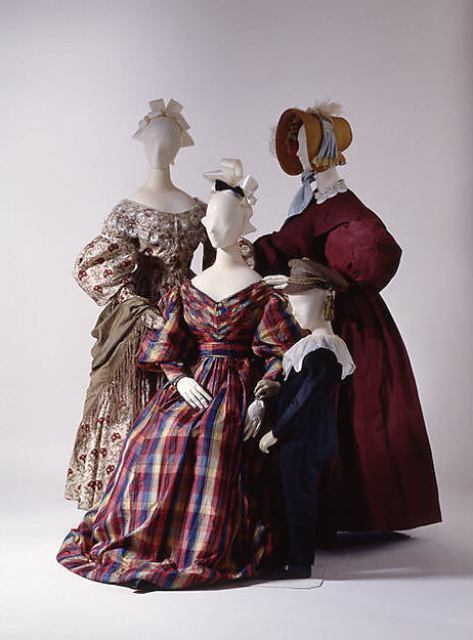

Notice Alida Christina's hair – straight on the upper third of the head, ending with a pouf of curls on each side. It's difficult to tell what is hair and what is a dark ribbon in the portrait, though it was common for the hair to be formed into a top-knot and decorated with ribbon, feathers and fancy pins, in addition to the curls in other locations on the head. It must've taken hours to achieve such perfection and I can imagine the frustration for the girls and women whose hair wouldn't cooperate! Not to mention the frazzled nerves of a poor lady's maid.
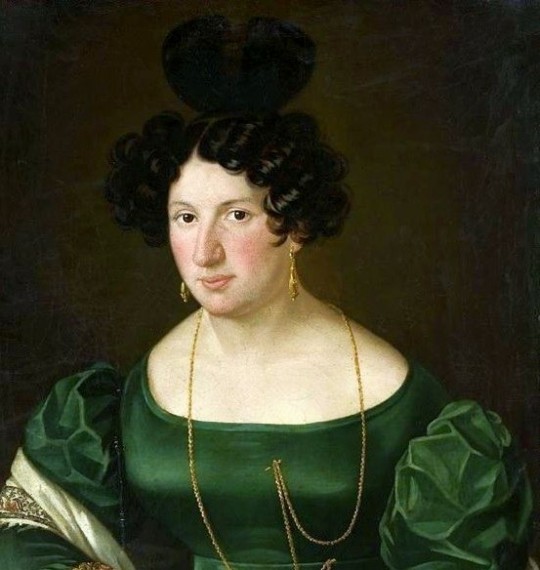

The Rijksmuseum website has a biographical snippet of Alida Christina Assink:
This portrait of Alida Assink presents her in her finest attire, depicted from head to toe. That is quite exceptional, as the painter Kruseman typically reserved such a full-length portrait exclusively for royalty. Assink was 23 years old when this likeness was commissioned by her guardian, a wealthy landowner. The rural setting with hunting dog and garden vase harks back to the English portrait style, which Kruseman admired.
#art#portrait#painting#fashion history#art history#dutch artist#woman's fashion history#romantic era fashion#1830s hair styles#female portrait#society portrait#fine art#the resplendent outfit blog#fashion history timeline#art & fashion history#rijksmuseum
19 notes
·
View notes
Text
Lovely in Teal and Gold: 20s and 30s Dresses

Woman's evening dress • 1st quarter of the 20th century • Boston Museum of Fine Arts
Made in part from an Indian sari of blue and gold; straight cut; blue satin slip; front of bodice and back, including short train, of sari; skirt of dress and underarm panels of gold lace; worn by Mrs. John D. Rockefeller, Jr.


Left: Chiffon Evening dress • 1920s
Right: Formal dress • c. 1925 • Germany • Embroidery in gold threads and glass beads on crepe georgette and gold lame

Grand Luxe mules • c. 1920 • France • Collection of The Museum at FIT
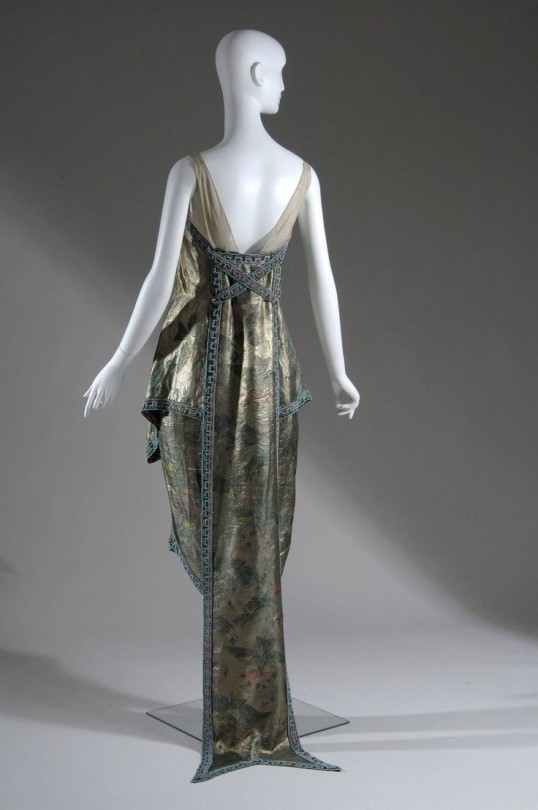
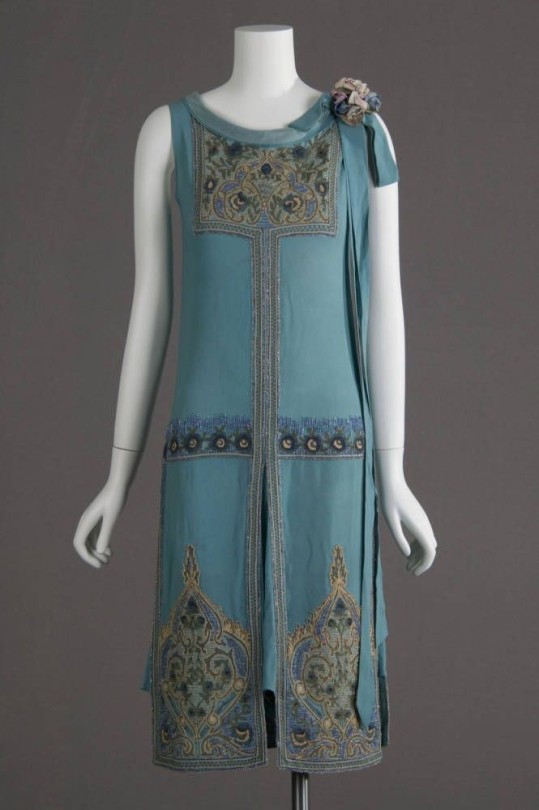
Right: Wedding dress • 1927 • Silk Charmeuse • Chicago History Museum
Left: Callot Soeurs evening gown • France • 1921 • Metallic brocade, pearl and glass beads
#fashion#fashion history#women's fashion#vintage dress design#1920s fashion#20th century fashion#flapper era#roaring 20s dresses#20s evening dresses#20s party dress#20s party shoes#callot soeurs#historical dresses#the resplendent outfit blog
21 notes
·
View notes
Text
Playing Dress Match-up: a painted dress and the actual dress or a close match.
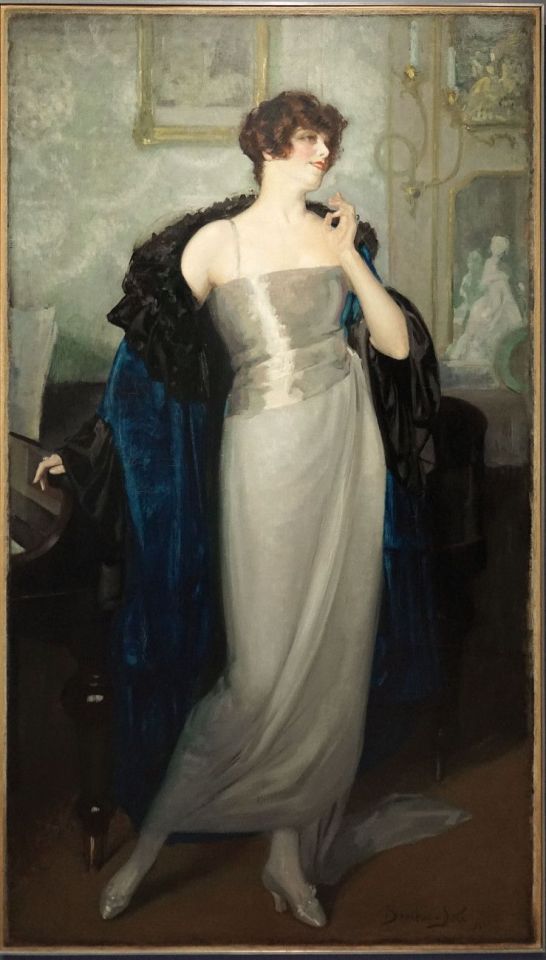
Albert Braïtou-Sala (Spanish, 1885-1972) • Portrait of Marthe Chenal • 1921 • National Library of France Opera Museum
Isn't Marthe grand? And, of course, very rich. I could not find a dress that to my estimate was a good match. That bias cut bodice made from what looks like metallic silk, with a flowy but curve flattering skirt of perhaps crepe? It slightly gathers at the waist, falling to the ankles with a subtle, elegant train in back. Really gorgeous. In my search there were many more dresses of the 1930s that fit this profile. The one below, for example. It was worn by the American businesswoman and socialite, Marjorie Merriweather Post.I posted about her portrait here.
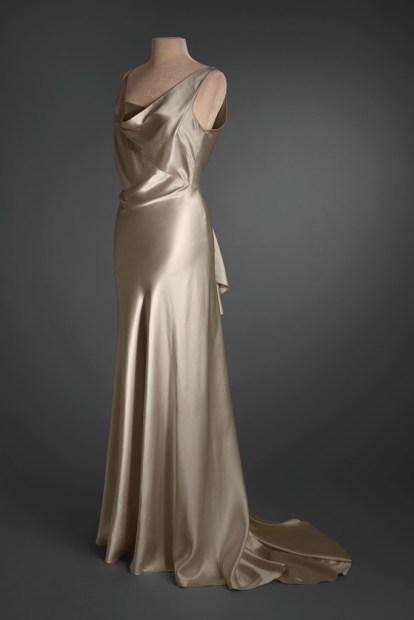
Evening Dress • American • c. 1933 • Cream silk crêpe, cream organza
In 1921, the flapper trend was only beginning to take shape. Waists had dropped a bit and would continue into the decade to drop further.

Fashion changes from 1924-1925
Although I didn't find a dress I liked as a match-up to the portrait of Marthe Chenal, I did find an evening coat that resembles the one she's so brilliantly flaunting.

Velvet opera coat • 1915-1920 • Augusta Auctions
#art#portrait#painting#fashion history#art history#albert braïtou-sala#1920s fashion#1930s fashion#spanish artist#the resplendent outfit blog#margerie merriweather post#historical fashion#fine art#fashion timeline#female portrait#fashion blogs on tumblr
25 notes
·
View notes
Text

Firmin Baes (Belgian, 1874-1943) • Portrait de Madame Timmers-Verhoeven • 1936
Here are a few actual vintage gold dresses from the 1920s and 30s. The smaller images below contain descriptive details in the alt text.

Probably American • c. 1925 • Ivory silk, metallic gold damask, in a pattern of birds, gazelles, and turrets on a follate ground, silk floss embroidery.

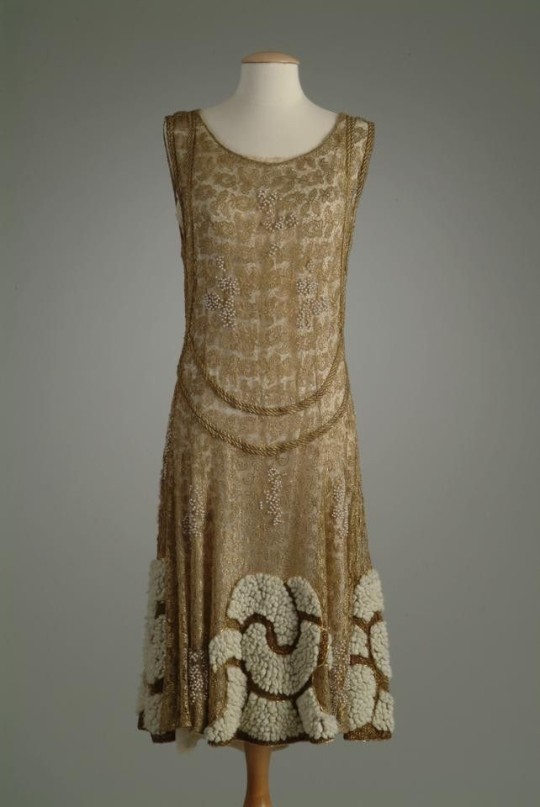
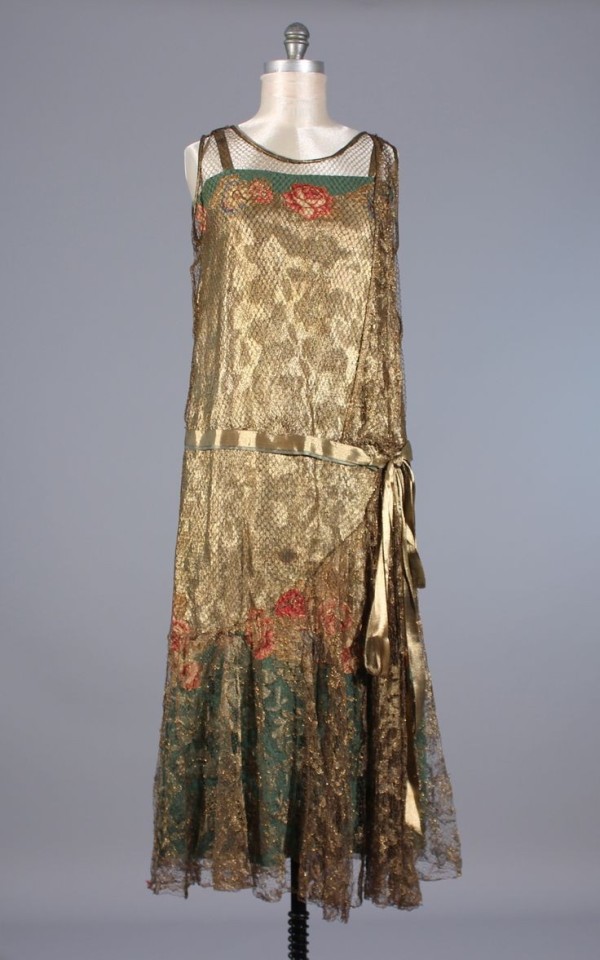
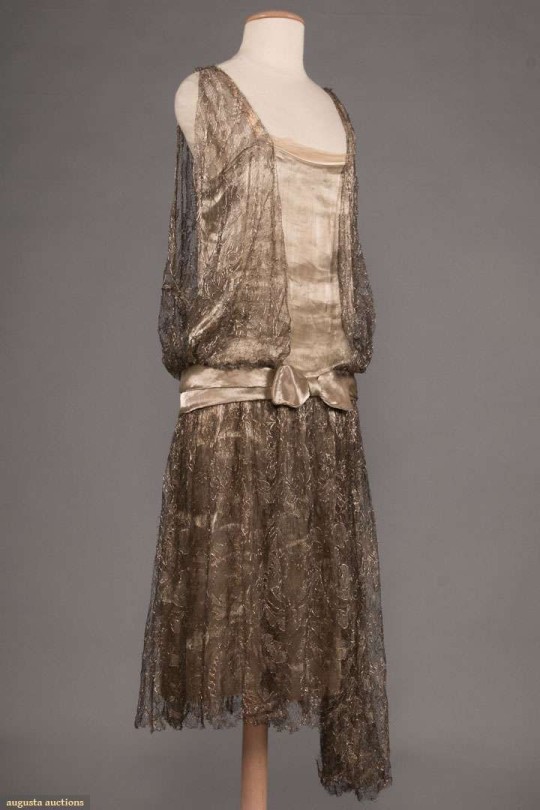

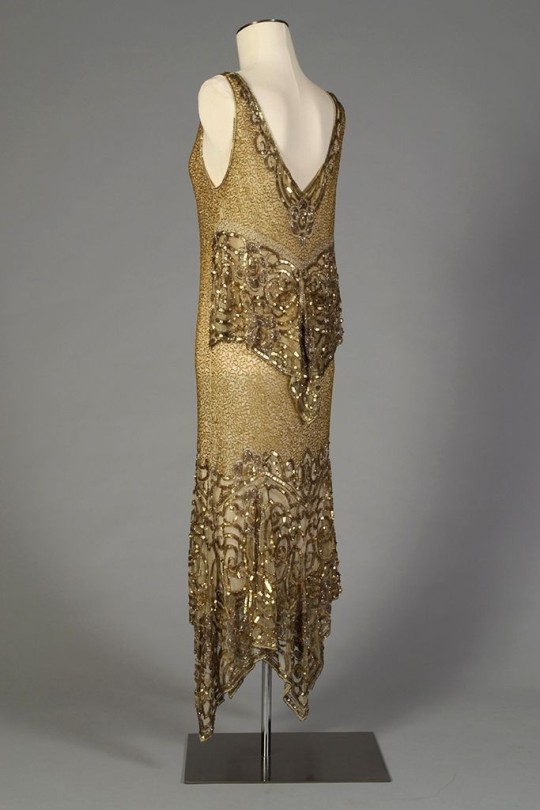

#art#portrait#painting#art history#firmin baes#fashion history#1920s fashion#1930s fashion#roaring 20s fashion#flapper era#women's fashion history#gold lamè dresses#sequined evening gown#the resplendent outfit blog#1920s designer dresses#20's evening dresses
26 notes
·
View notes
Text
Fashions of the Early 1830s: Large Hats and Leg-o-Mutton Sleeves
I was obsessed with Victorian era fashion for way too long! Let's jump back a few years and take a look at what royals and high-society women were wearing from 1830 to about 1836.

Vincente López Portaña (Spanish, 1772–1850) • Maria Cristina de Bourbon, Queen of Spain (fourth wife of Fernando VII) • 1830 • Museo Nacional del Prado, Madrid
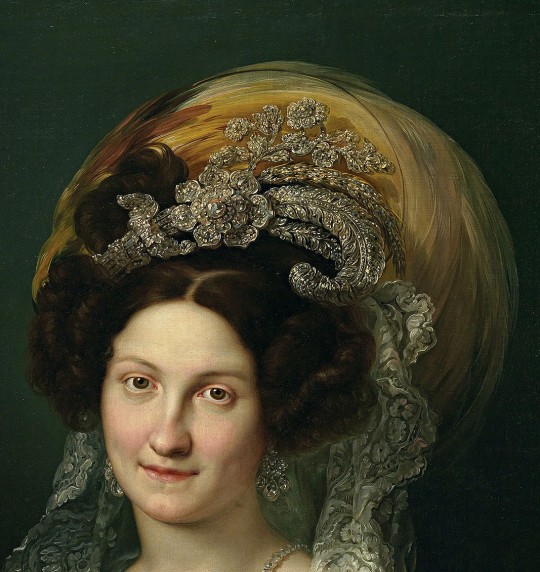

The style of the blue gown above is in keeping with Romantic era fashion, with its elbow-length puff sleeves with lace trim and pleated bodice. For formal attire, long gloves were worn.
The Maria Cristina de Bourbon portrait is of a royal subject, therefore the jewel-studded headpiece is especially grand, as is the bodice ornament and earrings. The feather was characteristic of the times – very large hats with feathers were in vogue, as well as large bonnets. The Spanish queen is wearing a lace mantila with her headpiece, which I assume is a symbol of her Spanish heritage.
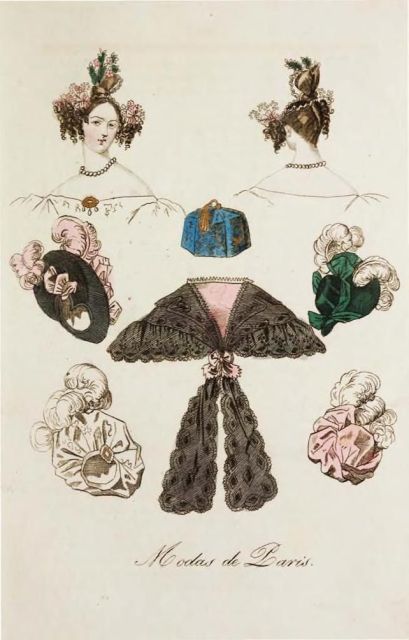
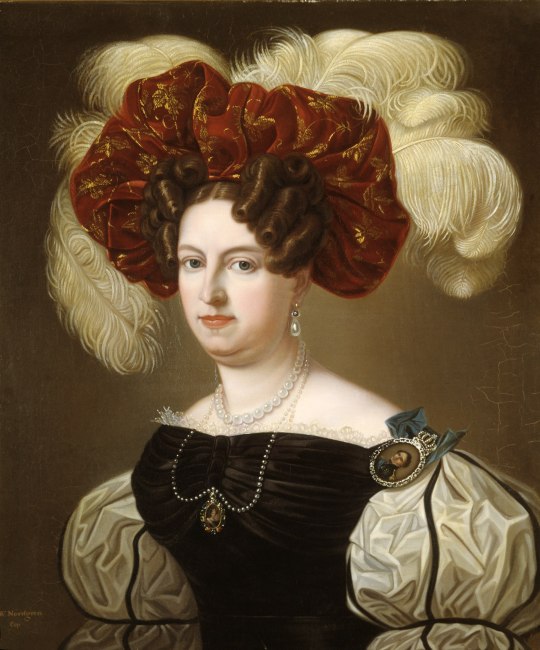
The fabric of the queen's dress is extraordinarily elaborate, with all-over silver thread embroidery. The bodice on this and many early to mid 1830s dresses was called a bodice à la Sevigne, which was made up of a central boned band divided into horizontal folds of fabric.
Belts and wide ribbons around the waist were often featured on dresses of the early to mid 1830s.
The fashion from circa 1830 to 1835 was one of over-porportioned extravagance. Sleeves larger than were ever seen or since been, width at the shoulders, and dramatic hats and headpieces.
Hair too was over-the-top. Notice the perponderance of elaborate braids, coils, and curls in these images.

1830-34 • British • Printed Cotton Day Dress • Victoria and Albert Museum
One such dramatic feature of 1830s fashion was the pelerine, a lace covering that was worn over the shoulders. The cut of the neckline was already exagerated to emphasize width at the shoulders; adding a pelerine only added to that width as well further acting as more ornamentation to the outfit.
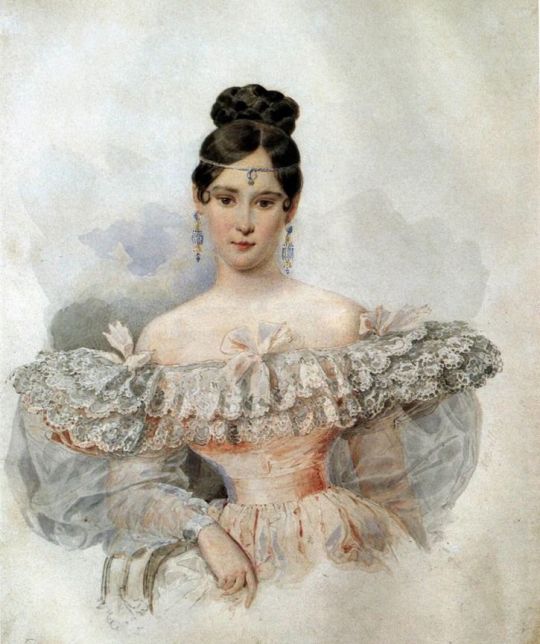
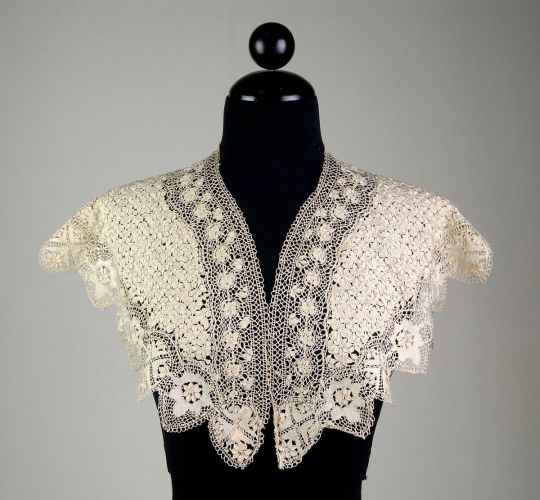
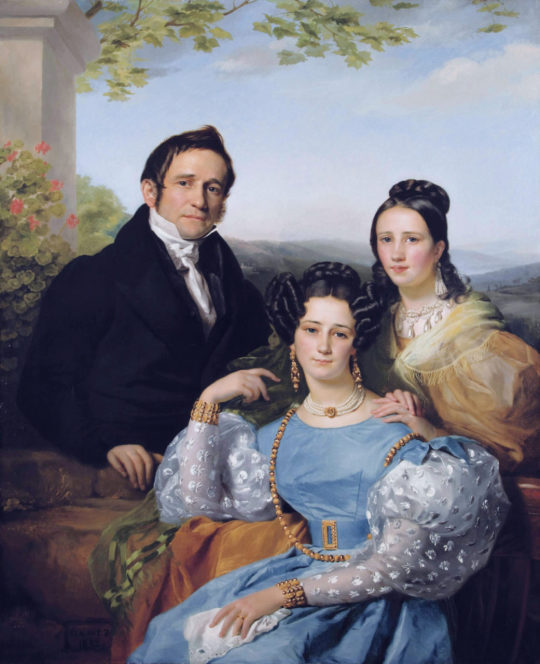
François-Joseph Navez (Belgian, 1787-1869) • Théodore Joseph Jonet and his two daughters • 1832 • Private collection
Sleeve style quickly evolved from simply puffy to Gigot or leg-o-mutton sleeves – a huge, billowy sheer sleeve over a smaller one, continuing with a tight-fitting long sleeve.
This flamboyance in sleeves was to suddenly come to an end around 1836. More about that in a future post, as I continue to flit willy-nilly along the fashion timeline!
References:
• Fashion History Timeline: 1830-1839
• Wikipedia: 1830s in Western Fashion
• Wikipedia: Pelerene
• Mimi Mathews: The 1830s in Fashionable Gowns: A Visual Guide to the Decade
#art#portrait#painting#fashion history#royal portraits#fine art#art history#romanticism and fashion#1830s fashion#historical fashion#art & fashion#family group#the resplendent outfit blog#art & fashion blog
27 notes
·
View notes
Text
Rococo Moodboard
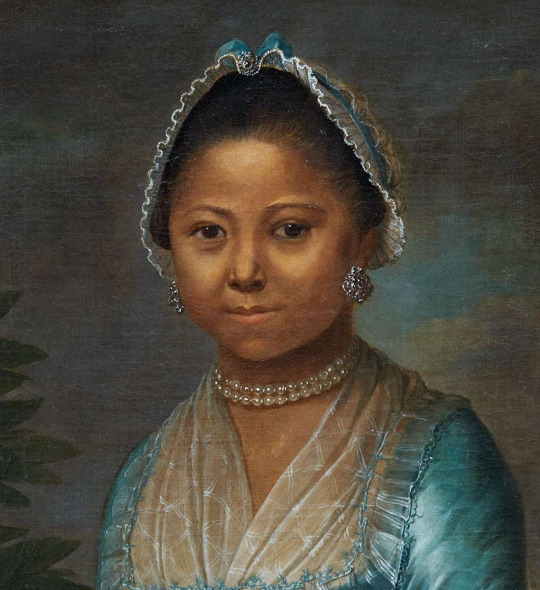

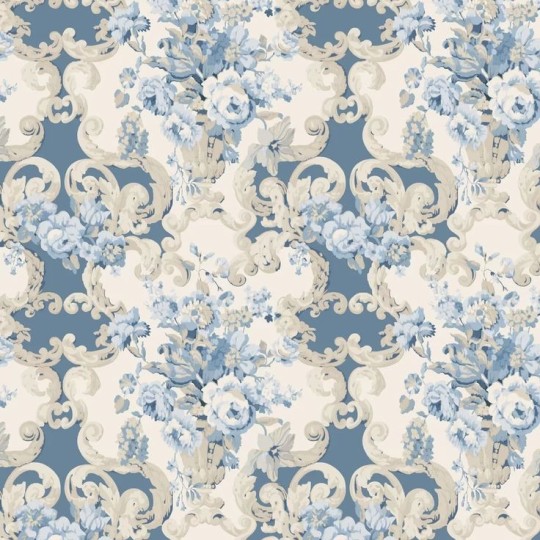

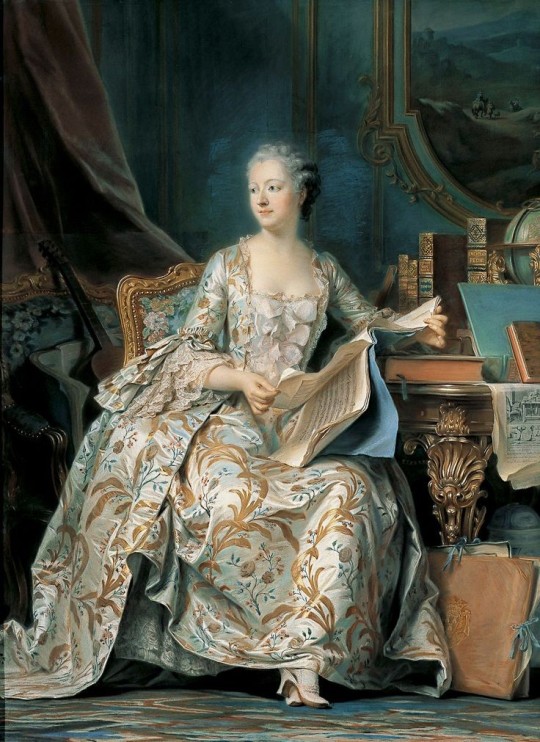
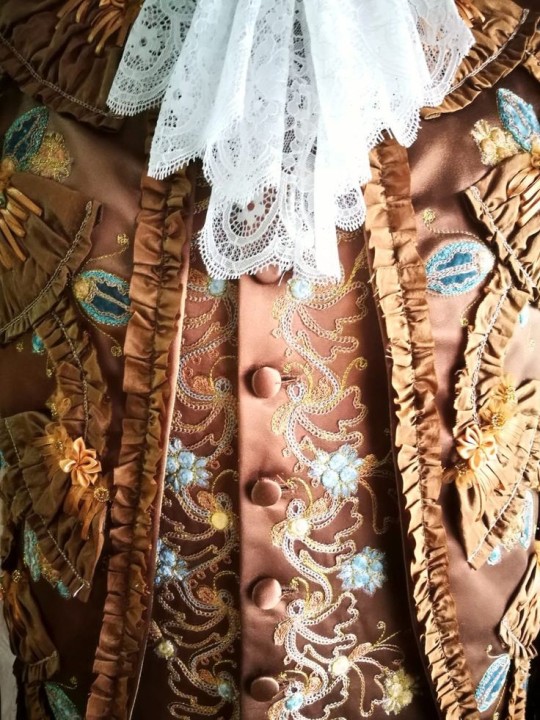
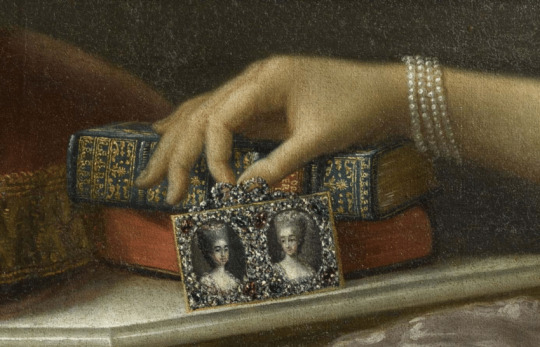
#art#portrait#painting#fashion history#art history#french artist#the resplendent outfit blog#fine art#royal portraits#rococo art#oil painting#rococo decor#17th century fashion#17th century house#17th century art#art blogs on tumblr#mood board
20 notes
·
View notes
Text
1920s Fashion – No Fringe
It's historically inaccurate to assume that every dress for evening had fringe. In perusing old photographs online, there are a few here and there but most of the photographs that exist today show women wearing classic 20s fashions without fringe.
Dropped waists became popular and were evident from street clothes to evening dresses. The new woman or flapper was starkly different from the women of the past. She was carefree and more independent, preferring clothing that was easy to move in. The term "flapper" wasn't exclusively used to describe women who danced daringly to jazz music but to describe this woman of the 20s as she flapped her new wings to embark upon a new era.
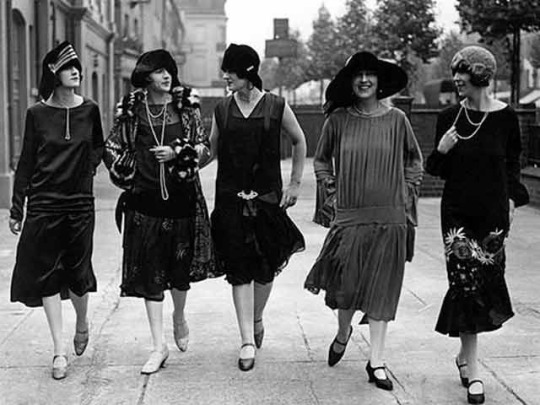
1920s urban socialites
Let's not forget that the iconic designer of the 1920s was Coco Channel. Among her contributions to the fashion world was the invention of The Little Black Dress.

The drawing on the right was featured on the cover of Vogue, 1926



1920s evening dresses by Callot-Souer
#fashion history#1920s fashion#coco chanel#little black dress#vogue magazine#women's fashion#flapper girl#callot-souer#fashion design#french fashion designer#the resplendent outfit
22 notes
·
View notes
Text
Playing Dress Match-up: a painted dress and the actual dress or a close match.

James Tissot (French/British,1836–1902) • Ball on Shipboard • c. 1867 • Tate, Britain
Tate gallery card:
In this work, Tissot paints a modern-life scene in full sunlight. It depicts an August sailing regatta on the Isle of Wight. The scene recalls celebrity parties held on Royal Yachts. The pairing of identical dresses was a fashion established by the royal family. The woman in a straw sailor hat, standing by the railing, has been mistaken for Queen Alexandra. However, others wondered if the revellers were more ordinary. Mass-produced clothing and social mobility were disrupting class boundaries. Tissot’s picture enjoys these playful confusions of the modern crowd.

Ball on Shipboard (detail)

This very similar dress was donned by a character in the televised series The Gilded Age.
#art#fashion#fashion history#art history#painting#genre painting#james tissot#the gilded age#fine art#the resplendent outfit blog#realism#historic dresses#1860s fashion#victorian fashion#women's fashion#women's fashion history
20 notes
·
View notes
Text
The Maids of the Victorian Era
In the1800s and early 1900s the role of maid was relegated to women from families of modest means. It was a job that required a great deal of subjugation and a steady mood. It's presumed that some maids were subjected to the various moods of their employers, at the very least. At worse, servants were overworked and sometimes physically or sexually assaulted.
In terms of clothing, the role of maid required very little. The maid, while at work, either wore a uniform or a plain work dress. A white apron and cap were standard.
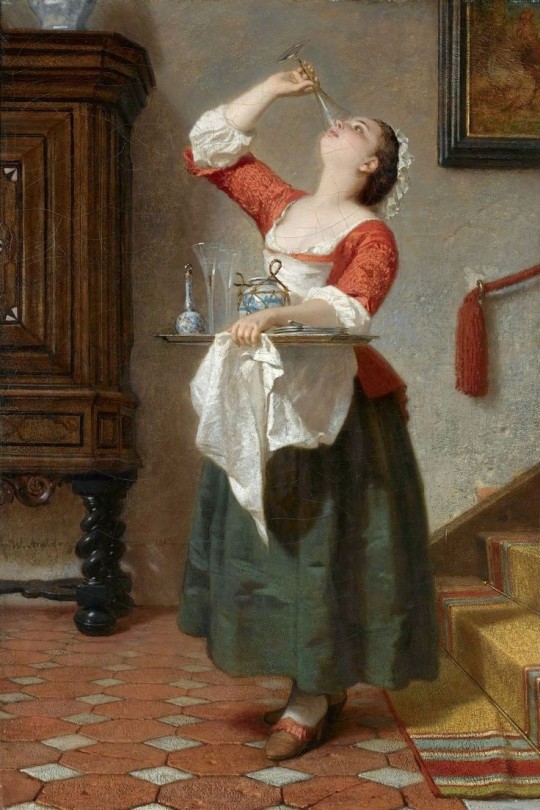
Wilhelm Amber • The Maid • 1862
The painting above shows a whimsical scene that if discovered by the employer may have resulted in a reprimand.
Except for the very rich, most households employed one servant – the "maid of all work". She was often a young girl who was taken in from the local workhouse. As the name implies, the role included all the chores of a household: cleaning, shopping, cooking, mending and washing. This grueling job paid very little due to the benefit of room and board. The maid often worked from early morning to late evening, with very little time off.
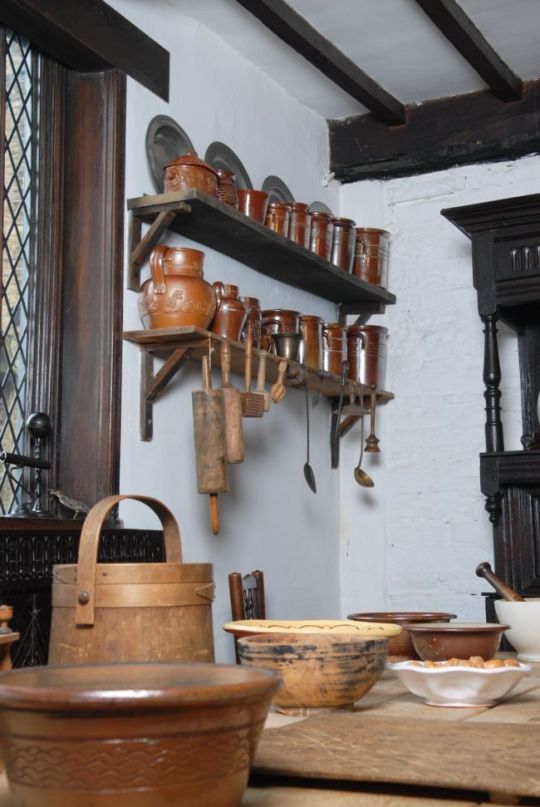
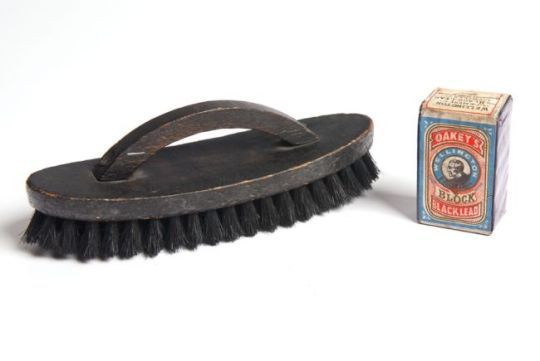
A simple black dress was often the uniform beneath the white apron. Notice in the photograph below that the two women are dressed identically.
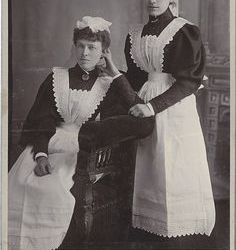
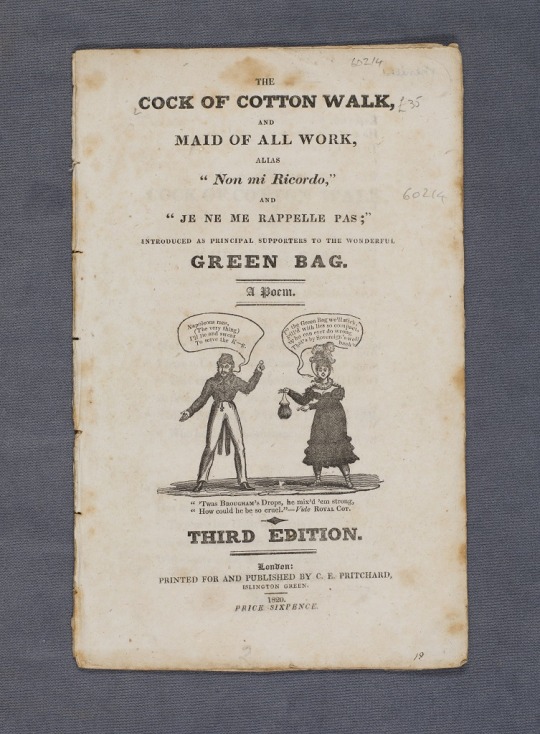

George Lambert (Australian, 1873-1930) • The Maid • 1915 • National Gallery of Australia, Parkes
References:
Jane Austen's World: Regency Servants – Maid of All Work
My Learning: The Family at Shibden
Elizabeth Bailey's blog
#art#portrait#painting#genre painting#george lambert#history of workers#servants in art history#history of clothing#the resplendent outfit blog#victorian era#regency era#19th century occupations#wilhelm amber#artwork
25 notes
·
View notes